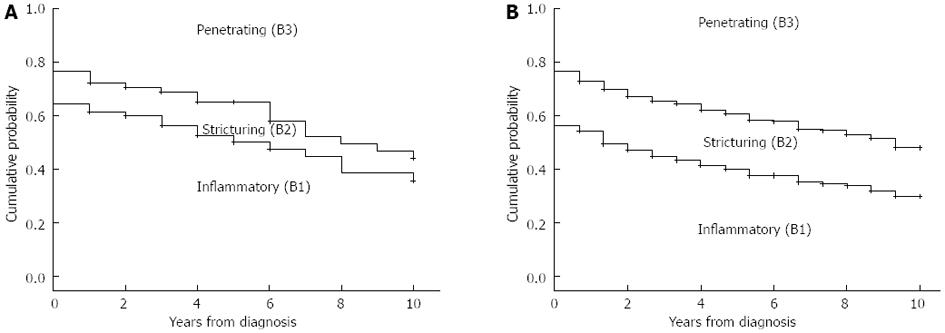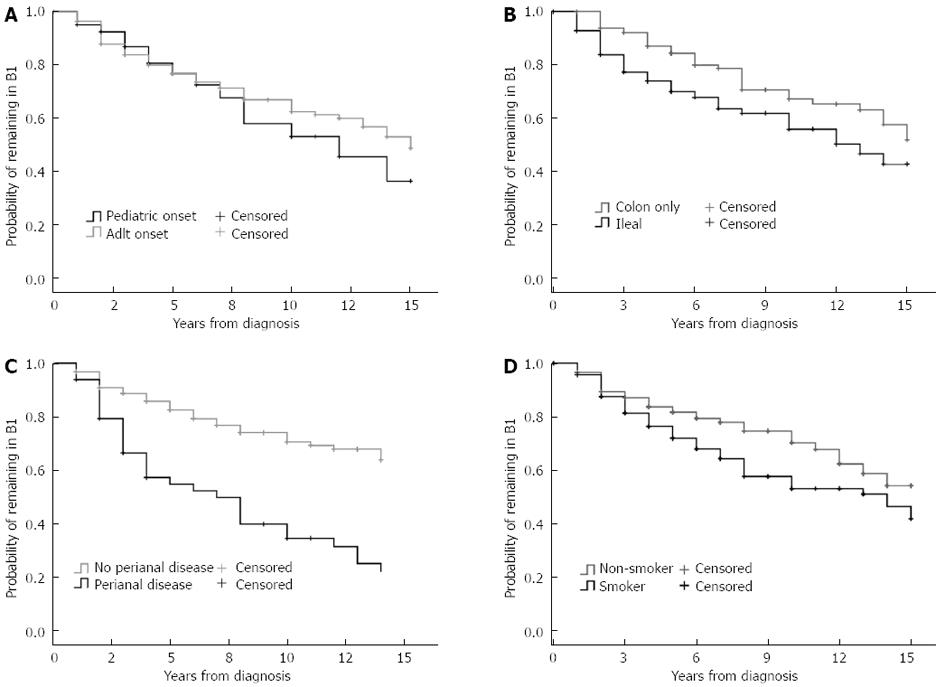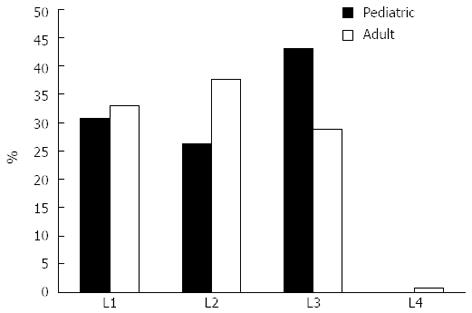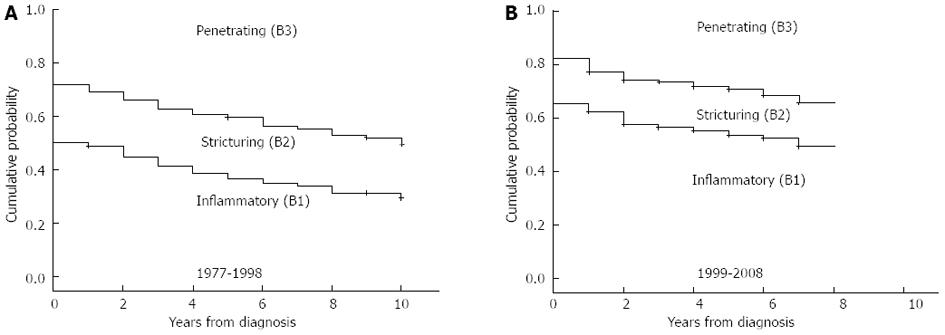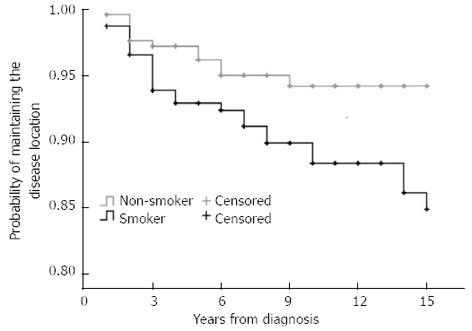Copyright
©2013 Baishideng Publishing Group Co.
World J Gastroenterol. Apr 14, 2013; 19(14): 2217-2226
Published online Apr 14, 2013. doi: 10.3748/wjg.v19.i14.2217
Published online Apr 14, 2013. doi: 10.3748/wjg.v19.i14.2217
Figure 1 The evolution of disease behavior in patients with Crohn’s disease according to the age at diagnosis.
A: Pediatric onset; B: Adult onset.
Figure 2 The probability of remaining in inflammatory (B1) disease behavior in patients with Crohn’s disease according to the age at diagnosis (A), location (B), presence of perianal disease (C) and smoking status (D).
A: PLogRank = 0.40, PBreslow = 0.62; B: PLogRank = 0.013, PBreslow = 0.002; C: PLogRank < 0.001, PBreslow < 0.001; D: PLogRank = 0.038, PBreslow = 0.051.
Figure 3 Distribution of disease location in Crohn’s disease patients at diagnosis according to the age at onset.
Figure 4 The evolution of disease behavior in patients with Crohn’s disease according to the year of diagnosis.
A: 1977-1998; B: 1999-2008. PLogRank < 0.001, PBreslow < 0.001 for complicated behavior between groups A and B.
Figure 5 The probability of maintaining the disease location in patients with Crohn’s disease according to the smoking status.
PLogRank = 0.011, PBreslow = 0.002.
- Citation: Lovasz BD, Lakatos L, Horvath A, Szita I, Pandur T, Mandel M, Vegh Z, Golovics PA, Mester G, Balogh M, Molnar C, Komaromi E, Kiss LS, Lakatos PL. Evolution of disease phenotype in adult and pediatric onset Crohn’s disease in a population-based cohort. World J Gastroenterol 2013; 19(14): 2217-2226
- URL: https://www.wjgnet.com/1007-9327/full/v19/i14/2217.htm
- DOI: https://dx.doi.org/10.3748/wjg.v19.i14.2217









